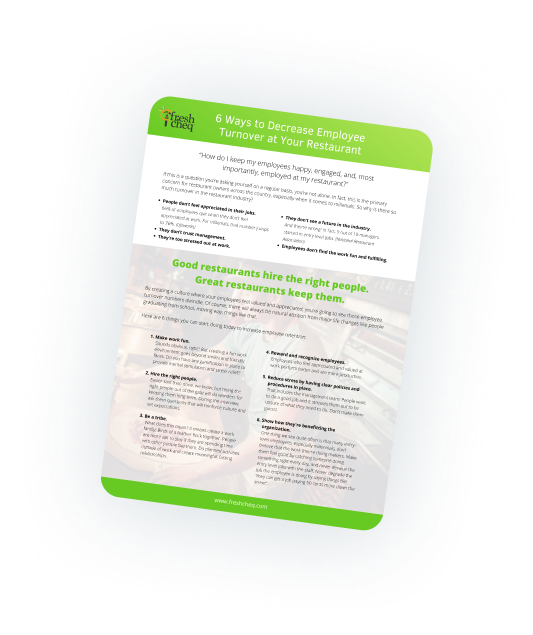All good restaurant managers and owners care deeply about food safety and sanitation, but there is a spectrum to how serious different people take it, what knowledge they have, and how closely their staff actually follows it.
To refresh on some of the best practices you probably already know and maybe introduce a couple of new ideas you may not have thought about, here are five essential tips for restaurant safety and food sanitation.
1. Make Employee Hygiene a Priority
When you think about your team cooking, cleaning, restroom breaks, etc. it’s easy to see why you should have multiple handwashing stations and reminders that they must wash their hands often. The bigger deal you make about doing a better job at food safety, the smaller the chance of people getting sick and that will make your restaurant overall safer and cleaner. A big part of this is sending sick employees home!
2. Make Sure that Your Equipment is Up to Date
Get rid of that old fryer that’s starting to leak and splat out hot oil that you’re hanging on to just to save some money. Make sure that you're keeping appliances up to date so that your employees aren't getting hurt when they're handling them. When you’re using equipment that’s breaking down, they require a lot more time to operate and clean than a brand new machine.
Speaking of safety, make sure you’re having someone inspecting your equipment at least once per week, including electric cables. It’s a nuisance, but things can go wrong very quickly if you don’t take this seriously.
3. Require Safe Attire for Your Employees
This includes things like non-slip shoes, special gloves to prevent cuts, hair nets while cooking, heat-resistant gloves if they're handling something in the fryer, etc. Keep your team safe!
4. Get Your Prep Done Early
If you get your prep done early, you're not going to be in a hurry which can lead to injuries to your team and mistakes being made. Being proactive will also help you avoid cross-contamination of the food. Plus, your employees will be less stressed out which will make them happy.
5. Track What Happens with Your Employees
Keep an eye on all of your workers' comp claims. Figure out what are your common injuries, what's going wrong, and take steps to ensure that you put better processes in place to prevent them from happening again.



